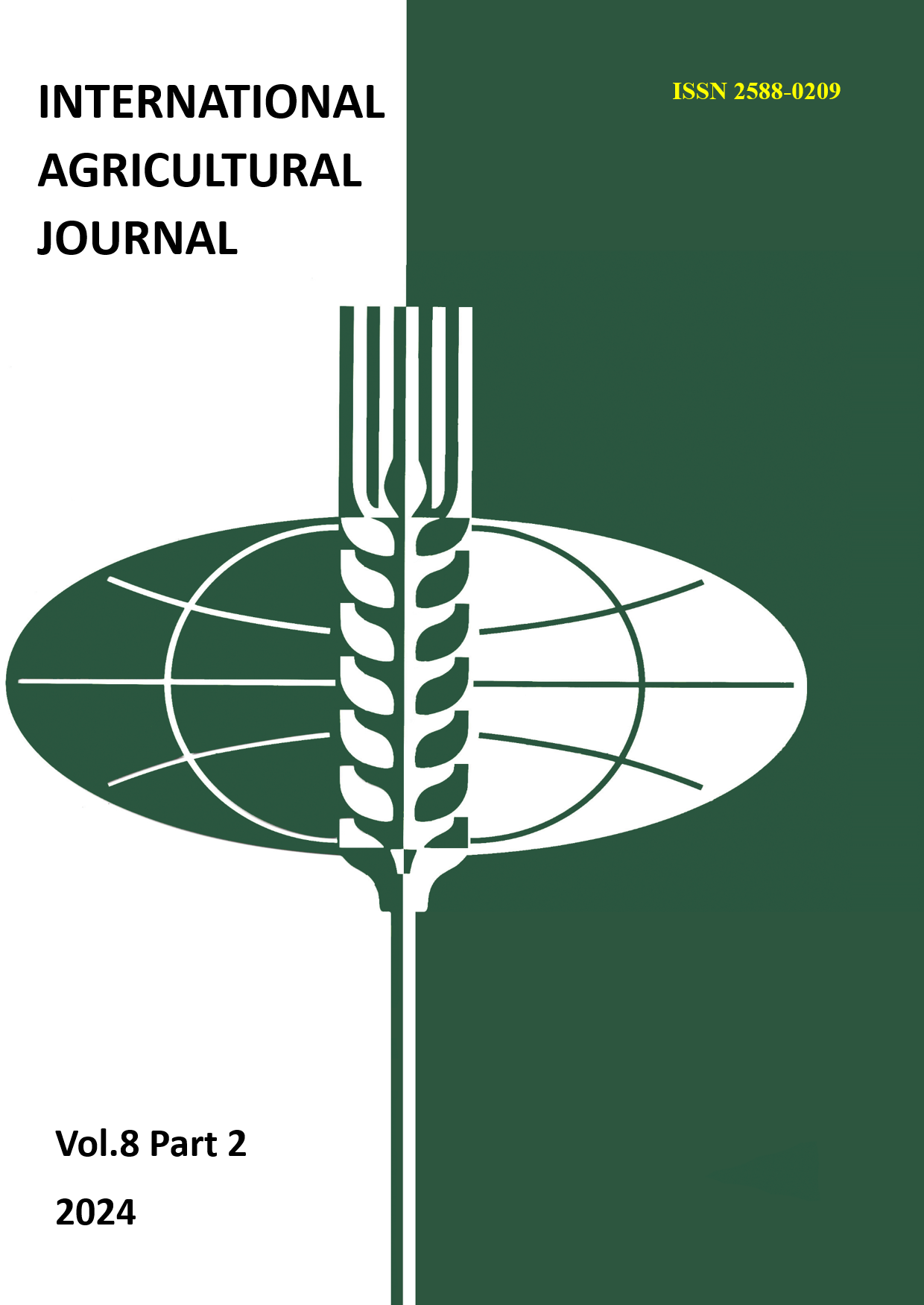CROP WILD RELATIVES OF YAKUTIA: ANALYSIS OF THE DISTRIBUTION OF SPECIES FOR IDENTIFYING FORMS OF VALUE FOR BREEDING PURPOSES
Main Article Content
Abstract
The creation of new highly productive plant cultivars adapted to unfavorable environmental conditions, diseases and pests, and used for the production of high-quality food products, requires a wide range of source material. Crop wild relatives (CWR) represent an important component of the source material for breeding.
Yakutia is characterized by a variety of natural conditions and resources due to its geographical position, which covers significant areas located in the northeast of the Asian part of Russia. Forty percent of the territory is located beyond the Arctic Circle. Significant plant material representing the flora of Yakutia, CWR included, has been accumulated. New data on the flora of Yakutia have been published.
In order to systematize the accumulated information, the available literature data, as well as the information from field surveys (collecting missions in 2020, 2022 & 2023), were used to analyze the CWR flora of Yakutia, which includes 288 species (15% of the total number of species in the flora of the region).
As a result, the greatest richness of CWR species (over 50% of the total number of CWR species in Yakutia) was expectedly found to be concentrated in floristic regions in the south of the republic, i.e. in Central Yakut, Verkhne-Lensky (Upper Lena) and Aldan regions. Among CWR, 26 species are the most widespread and occur in all floristic regions, while 70 species grow only in one floristic region. The widespread species exemplify a high degree of adaptation to contrasting growing conditions in the study area. The species that occur only in one floristic region are either those at the edge of their distribution range, or those outside it, as invasive, where they grow in growth-limiting conditions. All of them are of interest as source material for breeding.
Article Details
References
2. Danilova, N.S. & Korobkova, T.S. (2014). Dikiye rodichi kul'turnykh rasteniy flory Olekminskogo zapovednika kak istochnik iskhodnogo materiala dlya selektsii v Yakutii. [Wild relatives of cultivated plants of the flora of the Olekminsky Reserve as a source of source material for selection in Yakutia]. Nauchnyye vedomosti. Seriya Yestestvennyye nauki. No 17 (188), issue 28. pp. 49-55.
3. Danilova, N.S., Semenova, V.V. & Sabaraykina, S.M. (2014). Dikiye rodichi kul'turnykh rasteniy v prirodnykh soobshchestvakh dolinnoy chasti Yakutskogo botanicheskogo sada [Wild relatives of cultivated plants in natural communities of the valley part of the Yakut Botanical Garden]. Vestnik SVFU, vol. 11, no 3. pp. 28-37.
4. Khlestkina, E.K. & Chukhina, I.G. (2020). Genetic Resources of Plants: The Conservation and Use Strategy in the 21st Century. Herald of the Russian Academy of Sciences. vol. 90, no 6, pp. 298-302. doi: 10.1134/S1019331620030089
5. Kuznetsova, L.V. & Zakharova, V.I. (2012). Konspekt flory Yakutii: Sosudistiye rasteniya. [A synopsis of the flora of Yakutia: Vascular plants]. Novosibirsk: Nauka.
6. Nikolin, E.G. (ed.). (2020). Opredelitel vysshikh rasteniy Yakutii. [Keys to higher plants of Yakutia]. 2nd edition. Moscow: KMK Scientific Publishing Association; Novosibirsk: Nauka.
7. Smekalova, T.N. & Chukhina, I.G. (2005). Katalog mirovoy kollektsii VIR. Vypusk 766. Dikiye rodichi kul'turnykh rasteniy Rossii. [Catalog of the world collection of VIR. Issue 766. Wild relatives of cultivated plants of Russia] N. I. Dzyubenko (ed.). St. Petersburg: VIR. 53 p.
8. Talovina, G.V. (2020). Dikiye rodichi kul'turnykh rasteniy okrestnostey Yakutska: materialy polevykh issledovaniy 2020 goda [Crop wild relative materials from field research in the Yakutsk vicinity in 2020]. Vavilovia, vol. 3, no 4. pp. 6-22. doi: 10.30901/2658-3860-2020-4-6-22
9. Talovina, G.V., Popova A.S., Kutukova A.S., Nogovitsyna P.A., Sleptsov T.S., Vasilieva I.V., Sitnikov M.N. & Pikula K.S. (2022). Rasprostraneniye dikorastushchikh vidov smorodiny (Ribes L.) na territorii Respubliki Sakha (Yakutiya) [The distribution of wild currants (Ribes L.) of the Sakha Republic (Yakutia)]. Vavilovia, vol. 5, no 3, pp. 10-20. doi: 10.30901/2658-3860-2022-3-o3
10. Zakharova, V.I. (2001). Sosudistyye rasteniya reki Buotamy. [Vascular plants of the Buotama River]. Natsional'nyy prirodnyy park «Lenskiye stolby»: geologiya, pochvy, rastitel'nost', zhivotnyy mir, okhrana i ispol'zovaniye: Sbornik nauchnykh trudov. N.G. Solomonova (ed.). Yakutsk, 2001. pp.100-120.
11. Maxted, N., Ford-Lloid, B.V. & Hawkes, J.G. (1997). Complementary Conservation Strategies. Plant genetic conservation: the in situ approach. N. Maxted, B.V. Ford-Lloid and J. G. Hawkes (Eds.). London: Chapman and Hall, pp. 20-55.

